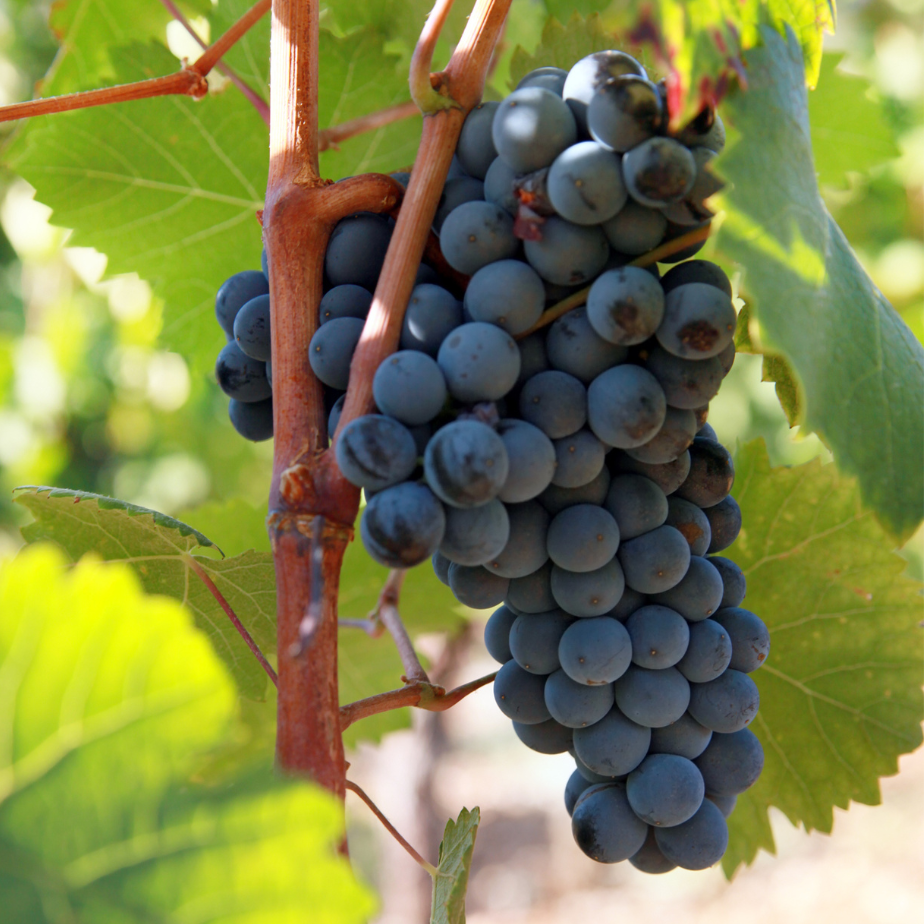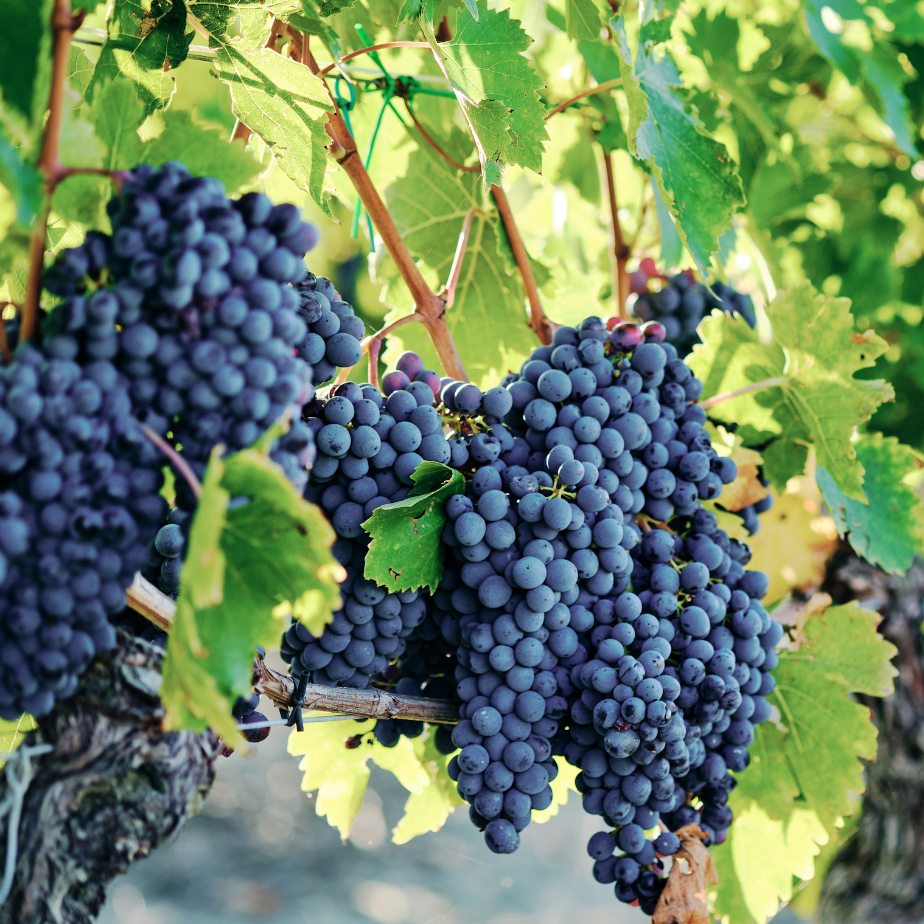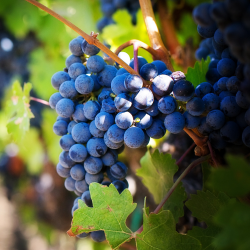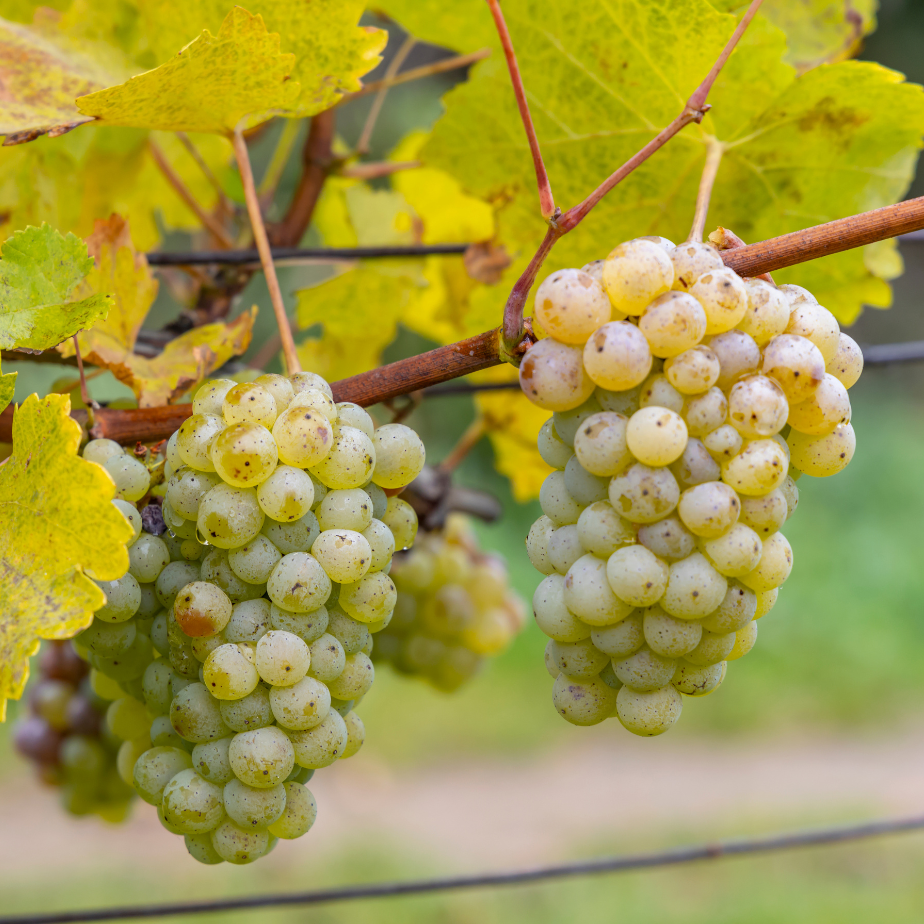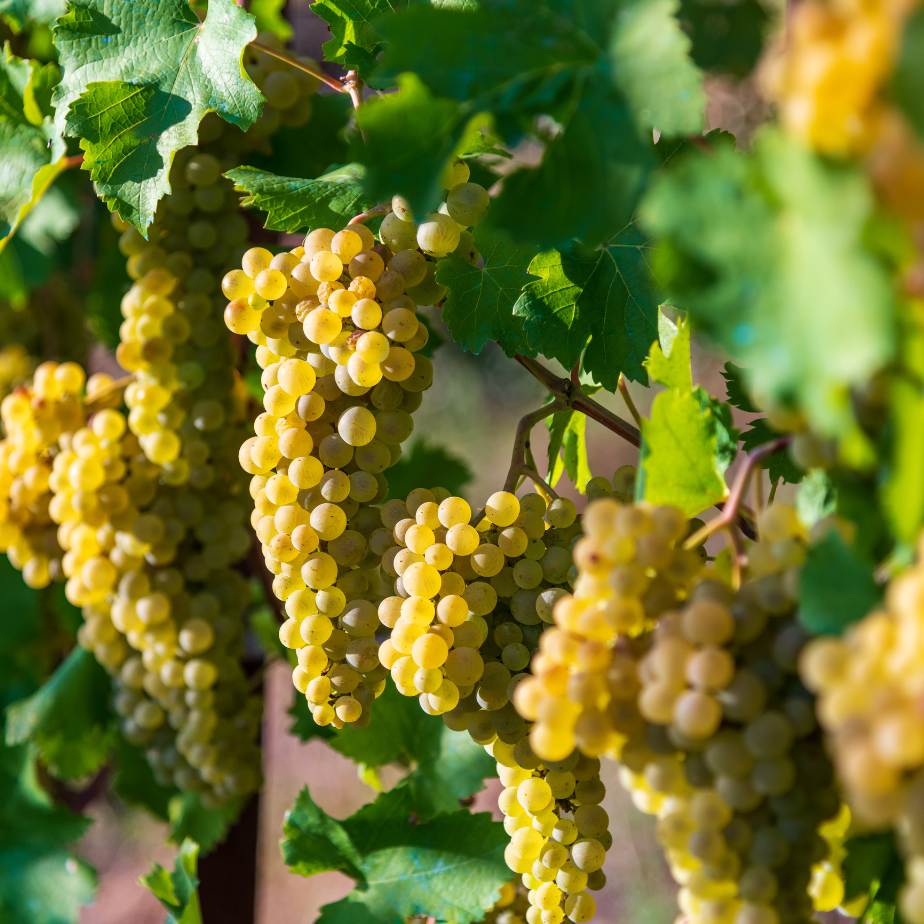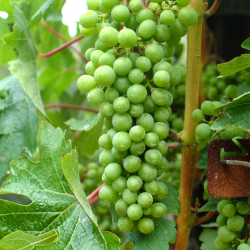
All You Need To Know About Washington Wine Country
When you picture Washington State, do you imagine rolling desert hilltops lined with vineyards and bountiful sunlight? Probably not. Most of us picture Washington as the gloomy, grey-skied Seattle. But just three hours east of those grey skies is an entirely different place: Washington Wine Country, baby!
In case you can’t tell, I’m a little biased. I’ve had the pleasure of calling Washington home for ten years, and I’ve gotten to know the wines pretty well. With its sunny skies, mineral-rich soils, and plenty of elevations to experiment with, it’s an exciting and complex region. After all, where else could you find everything from the rare tannic-rich Tannat to the delicate aromatic white Madeleine Angevine?
In this post, we’ll take a deep look into the Washington wine region. We’ll touch on some history, regions, and key varietals to know!
A brief sip on Washington state
Washington is America’s second-largest wine producer behind California. Almost all of the wine made in Washington grows east of the Cascade Mountain Range. This mountain range casts a rain shadow down the state’s center, separating the misty Seattle from the dry low desert landscape of Eastern Washington.
The largest AVA (American Viticultural Association) in Washington is the Columbia Valley, which encompasses most of the smaller sub-regions within it. In the Valley, rich, heat-thriving reds dominate. As you look south and to higher elevations, you’ll find more Pinot Noir and aromatic white wines.
Fun fact: Washington state, on average, gets 2 more hours of sunlight than California!

What gives Washington wine its flavor?
The first vines were planted in the mid-1800s, but the story really begins about 15,000 years ago, with a dose of luck and a lot of water.
Ancient history
At the end of the last ice age, about 15,000 years ago, a series of cataclysmic events known as the Missoula Floods occurred. A massive glacial lake flooded across Eastern Washington and down the Columbia River Gorge. This happened not once but numerous times over thousands of years.
The result was a thick layer of silt, sand, and gravel atop basalt bedrock. Subsequent wines brought mineral-rich loess across the valleys—the result: quick-draining soil that’s ideal for vines to root deeply into the ground.
Climate
As I just mentioned, Eastern Washington is a low desert. This means the days are long and warm, and the temperature fluctuation between morning and evening is drastic, especially during the growing season. In fact, the average weather in Eastern Washington can change by as much as 50 degrees in a few hours during this time.
It’s the warm days that help the grapes ripen, and the cool evening lull the vines to sleep, locking in that precious acidity.
Varieties
Washington may mostly be known for making big-bodied reds, but they also make a variety of whites, rosés, and sparkling wines. Here’s a breakdown of the red and white varietals to know:
Cabernet Sauvignon
Dominant throughout Washington, especially in Columbia Valley, Horse Heaven Hills, Walla Walla, and Red Mountain.
Merlot
Very popular throughout the Columbia Valley both as a standalone varietal and as a Bordeaux-style blend.
Sangiovese
One of the earlier grapes introduced by young Italian winemakers, today it’s widely made as a fruity and vibrant rosé.
Chardonnay
Most popular in the Yakima Valley, both oak-driven and stainless steel styles are common.
Pinot Gris
Popular in Horse Heaven Hills and Yakima Valley, known for being crisp, zesty, and a perfect pairing for the state’s coastal oysters.
Side note: Most of the varietals that dominate are the “popular ones,” but one of my favorite aspects of Washington wine is the number of rare varietals immigrant winemakers have introduced. It’s not uncommon to see a winery pouring anything from Tannat to Lemberger, Semillon, Gewürztraminer, Picpoul, Petite Sirah, or Dolcetto, to name a few.
Regions in Washington to know
There are currently 20 AVAs in Washington, with many in the Columbia Valley. In fact, only two subregions fall outside of the Columbia Valley: the Columbia Gorge and Puget Sound. Here’s a quick breakdown of some key ones to note.
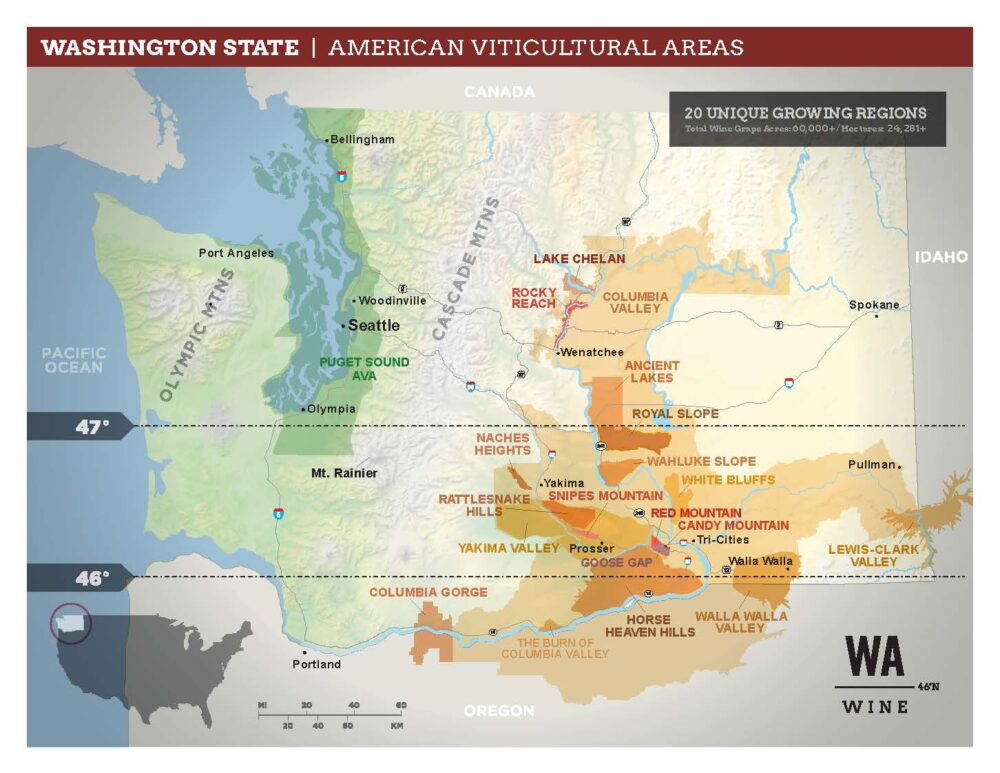
wine map courtesy of washingtonwine.org
Horse Heaven Hills
Named for the wild horses which used to roam the hills of Eastern Washington, Horse Heaven is one of the warmer appellations. This makes it an ideal spot for growing juicy, full-bodied Cabernet, Merlot, Syrah, and Chardonnay.
Yakima Valley
Washington’s oldest AVA and the country’s third federally approved wine region. Over 25% of Washington wines come from here. Smaller appellations are housed within Yakima Valley, including Red Mountain, Snipes Mountain, and Rattlesnake Hills.
Surprisingly, Yakima is one of the few regions known more for white wines than reds, though it has a bit of everything. The most popular varietals include Chardonnay, Cabernet Sauvignon, Merlot, Syrah, and Riesling.
Walla Walla
That’s right, she’s more than sweet onions and wheat farms! Walla Walla was a relatively minor wine region until the last decade. Today it has Washington’s highest concentration of wineries and tasting rooms by a lot. Syrah is the leading varietal, swiftly followed by Cabernet Sauvignon and Merlot.
Lake Chelan
Lake Chelan has a higher elevation and more even-keel climate compared to most of the regions in the Valley. Here you’ll find delicate red wines like Pinot Noir, along with aromatic whites like Viognier and Marsanne.
Puget Sound
Puget Sound is the only wine region on the west side of the Cascade Mountains. This small region primarily exists within the state’s islands: Whidbey Island, Bainbridge Island, and the San Juan Islands.
Here you can expect to find rare aromatic white wines like Madeleine Angevine, Siegerebbe, Müller-Thurgau, and some Pinot Noir.
Columbia Gorge
The Gorge is Washington’s westernmost AVA located on the eastern side of the Cascades. This appellation is split between Washington and Oregon and is most known for being one of the only regions that doesn’t require irrigation. The steady rainfall, coupled with its maritime climate, makes it perfect for growing light-bodied reds like Pinot Noir, Chardonnay, Pinot Gris, and Riesling.


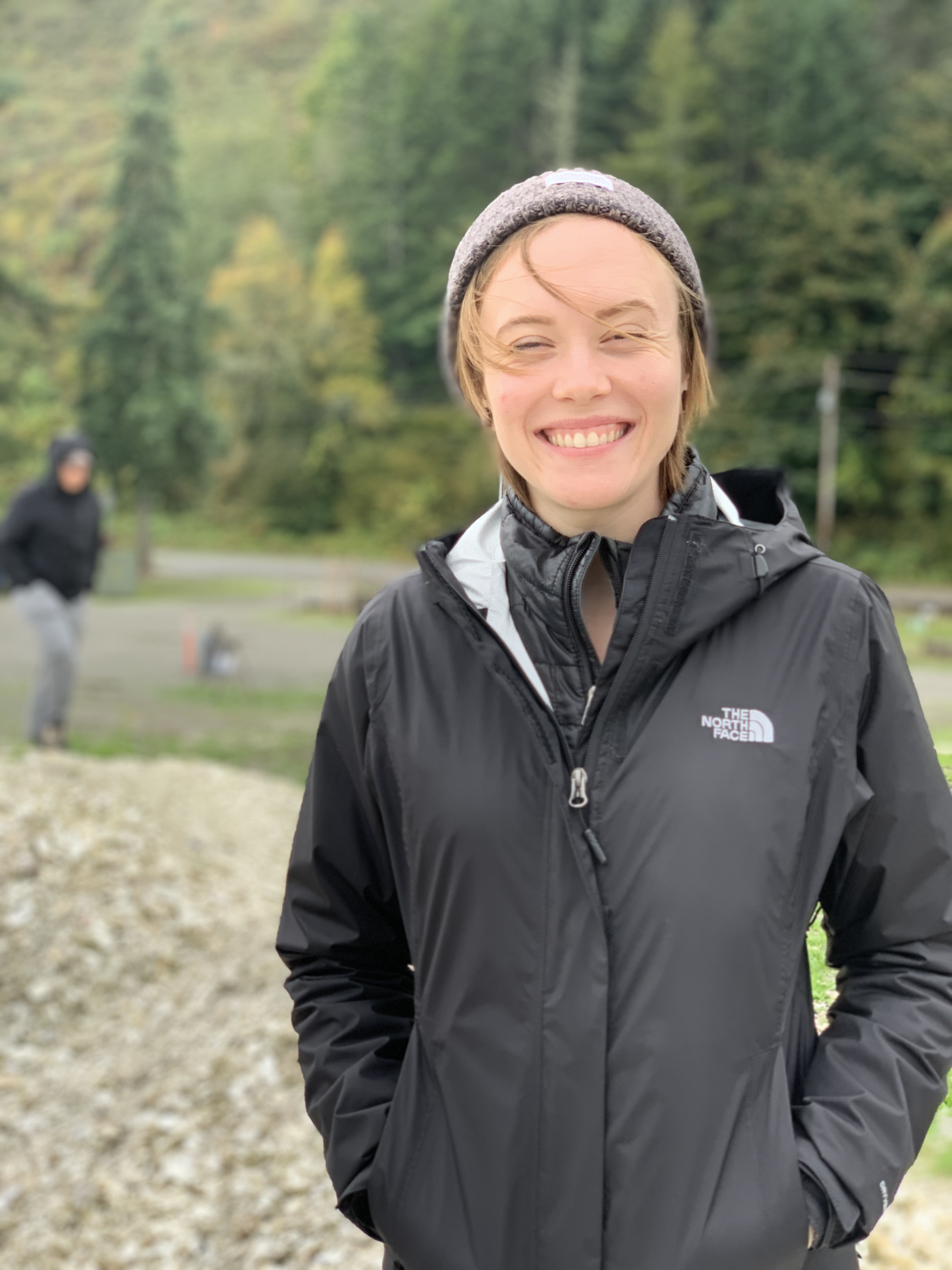
Olivia is a Washington-based freelance writer with a Level 2 Award in wines from the Wine & Spirit Education Trust. She has a passion for all things food, wine, and travel, though her heart belongs to the Pacific Northwest. When she’s not sipping on a glass of Washington Cab., she’s usually bikepacking, crocheting, or chillin’ in the sun with her dog Tater.
IG: @liv_eatslocal
Website: liveatslocal.com



